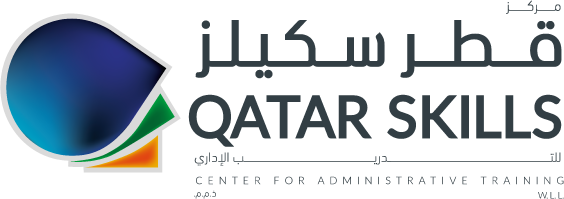array (
'course-city' =>
array (
0 => 48,
177 => 90,
226 => 77,
336 => 106,
371 => 107,
445 => 72,
486 => 108,
528 => 109,
551 => 110,
582 => 111,
604 => 71,
639 => 112,
673 => 78,
708 => 113,
798 => 70,
818 => 114,
875 => 115,
877 => 127,
910 => 116,
1054 => 117,
1226 => 118,
1324 => 91,
1402 => 119,
1492 => 120,
),
'course-language' =>
array (
0 => 49,
706 => 126,
),
'types' =>
array (
0 => 81,
),
'course-category' =>
array (
0 => 67,
127 => 64,
128 => 65,
129 => 58,
130 => 59,
131 => 66,
132 => 125,
133 => 60,
134 => 61,
135 => 123,
136 => 46,
137 => 51,
138 => 62,
139 => 85,
140 => 83,
141 => 76,
144 => 99,
145 => 57,
146 => 63,
149 => 97,
152 => 98,
157 => 124,
158 => 103,
159 => 104,
160 => 105,
161 => 55,
162 => 75,
163 => 53,
164 => 56,
172 => 100,
174 => 101,
178 => 122,
191 => 121,
240 => 102,
),
'course-type' =>
array (
0 => 73,
),
)Predictive Maintenance and Condition Monitoring Techniques
Course Overview:
The maintenance philosophies are one of the major parts in our era. The definition between Maintenance and Repair issues is one of the major concerns. The application of the developed maintenance techniques such as the RPN and the FMEA techniques together with the troubleshooting techniques will be discussed.
In addition to an increase in reliability, more money is saved in comparison to the cost of a program just using reactive maintenance, Participants indicate that this savings can amount to as much as 12% to 18% on the average. Depending on a facility’s current maintenance practices, present equipment reliability, and facility downtime, there is little doubt that many facilities are purely reliant on reactive maintenance. By implementing a proper preventative maintenance program, they could save much more than 18%.
Course Objectives:
Upon completion of this course, the trainees will be aware and understanding of the following:
- Develop, implement and supervise the preventive and predictive maintenance program
- Implement the latest techniques and management styles of leading facilities and maintenance management practices
- Optimize the effectiveness of maintenance, by using sophisticated techniques and methods, to economize time, money and resources
- Prevent and limit equipment failures, and rework to improve the equipment’s overall effectiveness and reliability
- Decrease downtime and increase profit for their organization
Who Should Attend?
This course is designed for all Maintenance Managers/Engineers, Supervisors and Planning Engineers. It is also suitable for those who are in operations, engineering and purchasing/materials divisions and who would like to acquire an understanding of how the quality of the maintenance function affects their department, and their organization’s bottom-line.
Course Content:
Module (01) Maintenance overview
- What is maintenance?
- Building a best in class asset register
- Formulating the maintenance policy
- Defining maintenance standards and allocation of resources
- Applying maintenance strategies
Module (02) Common issues in an organization
- Lack of accountability
- Resource level issues
- Work requests with insufficient information or duplicated
- Importance of time writing daily
- Technical history retention
- KPI reviews – how often and why
Module (03) Computerized Maintenance Management System (CMMS) set-up
- CMMS set-up
- Criticality assignment SCE
- Class and classification assessment and allocation
- Defining asset register systems
- Allocation of main work centers
- Cost center assignment(s)
- Bills of Material (BOMs) advantages
Module (04) Work identification and requesting
- Work preparation: what is required and why
- Equipment assignment to the correct level
- Assigning prioritization – the benefits in using prioritization
- Best-in-class information required through Corrective Maintenance – Predictive Maintenance (CM-PM) work order(s)
- Roles and responsibilities for work preparation
Module (05) Work planning and estimating
- Reviewing past history and the benefits to work planning
- Allocation of correct resources and hours
- Identifying materials using Bills of Material (BOMs)
- Allocation of external resources with or without Service Level Agreements (SLA)
- Consider building relationships between activities within work order operations
- Pre-scheduling through criticality – prioritization
Module (06) Completion and work control
- Updating the future maintenance plans(s) and asset register through technical history feedback
- Review of estimated versus planned versus actual costs
- Review of man-hours expended versus estimated
- Material usage – Question were any materials not used returned to stock?
- Correctly signing off work order/work request through the CMMS system
Module (07) Maintenance replacement decisions
- Component replacement procedures
- Age-based replacement policy
- Analysis of component failure data
- Using Weibull parameters
- Life-cycle costing
Module (08) Downtime reduction
- Tracking downtime
- Personnel training
- Importance of feedback from employees
- Outsourcing considerations
- Considering using Overall Equipment Effectiveness (OEE)
Module (09) Performance reporting
- Primary reporting Key Performance Indicators (KPIs)
- Secondary reporting KPIs
- Leading and lagging KPIs
Module (10) Action plan
- Management of Change (MOC) process
- Continuous Improvement (CI) techniques



